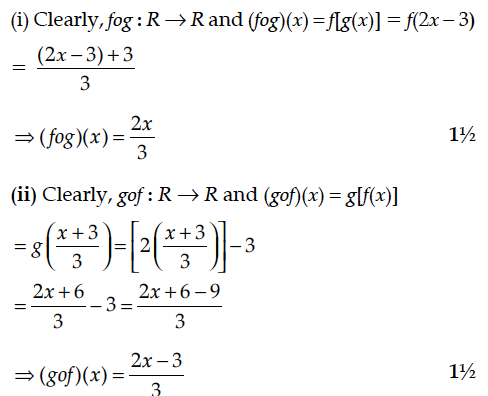If the function f : R → R is given by f(x) = and g : R → R is given by g(x) = 2x – 3, then find
(i) fog (ii) gof
Is f⁻¹ = g?
(i) fog (ii) gof
Is f⁻¹ = g?



If the function f : R → R is given by f(x) = x² + 3x + 1 and g : R → R is given by g(x) = 2x – 3, then find
(i) fog (ii) gof
If the function f : R → R be given by f(x) = x² + 2 and g : R → R be given by g(x) = find fog and gof and hence find fog(2) and gof(– 3).
Let f : R → R be defined by f(x) = 3x² – 5 and g : R → R be defined by g(x) = find gof(x) .
If f : R → R and g : R → R are given by f(x) = sin x and g(x) = 5x² then find gof(x)
Find the particular solution of the following differential equation :
Three schools A, B and C organised a fete (mela) collecting funds for flood victims in which they sold hand-helds fans, mats and toys made from recycled material, the sale price of each being ₹ 25, ₹ 100 and ₹ 50 respectively. The following table shows the number of articles of each type sold :
P speaks truth in 70% of the cases and Q in 80% of the cases. In what percent of cases are they likely to agree
in stating the same fact ?
Form the differential equation representing family of ellipses having foci on X-axis and centre at the origin.
